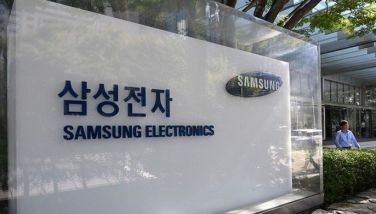How to tackle traffic woes without adding more roads
MANILA, Philippines - More than half of the world’s population now lives in cities. There are many benefits that come from millions of people living, working and interacting in close proximity to one another.
Traffic, however, is not one of them.
More than just an annoyance that impacts quality of life, chronic traffic congestion can be bad for the economy and the environment. In June, NEDA and Japan International Cooperation Agency (JICA) released a roadmap for traffic infrastructure development in Metro Manila and nearby areas saying that the Philippines lost around P2.4 billion every day in 2012 because of the traffic congestion. The report also forecast that the losses may increase to P6 billion a day come 2030. The environment is not to be spared from such predicament as JICA’s report also shared that 4.79 million tons of gas emissions a year was recorded in the Philippines due to the severe traffic jams in 2012, which may climb to 5.72 million tons in 2030.
Fortunately, cities have other options at their disposal to help tackle and tame urban traffic congestion. They also have access to sophisticated software tools that can help simulate the impact of these solutions before anything is built. This allows urban planners to experiment with multiple scenarios and select the best mix of solutions to address their traffic woes.
Fast-moving buses. Bus rapid transit (BRT) varies from region to region, but it typically involves creating a dedicated lane for buses on surface roads, so that buses can move large amounts of people from point A to point B more quickly. This is why it is good that the World Bank has recently approved a financial package to facilitate the implementation of the Philippines’ first bus rapid transit (BRT) in Cebu. As with any transit decision, a tradeoff is involved: if you put in a BRT lane, you lose a lane for cars. Software models can help analyze the transit network as a whole to show how many more riders a stretch of road could carry with a BRT system in place and how much time could potentially be shaved off of daily commutes.
Smart traffic lights. Nobody likes waiting on a red light—especially when no cross-traffic is using the green light. Adaptive traffic lights vary their signals in real time to improve traffic flow.
Traffic flow adjustments. This may sound counterintuitive, but when traffic becomes very busy, you can actually get more through put if you slow everyone down a bit. Metered entrances at highway on-ramps – or similar meters along the roadway—control the speed dynamic and help prevent the start-stop traffic that tends to create traffic jams.
Congestion tolls. Used to great success in places like London and Singapore, congestion tolls offer another way for cities to get more capacity out of an existing road. By charging people a toll to drive into the city center, congestion tolls create an incentive for people to carpool, so that the road carries more people per hour than it normally would.
Bike-sharing services. Bikes take up less space than cars, which means that you can fit more bicyclists than cars onto any given stretch of road. And while an increase in bicyclists means taking away some existing road space to create a bike lane, these are generally half the width of a car lane. In fact, the Metro Manila Development Authority has launched a bike-sharing program in March 2014 and expanding this existing program to more major roads may magnify its transportation advantages to commuters.
Ride-sharing services. Technology has been able to connect people who want a ride with drivers who have an available car with the use of mobile apps. Simply put, they’ve found a way to optimize the use of a vehicle so that it is more widely used.
As more and more people gravitate towards urban centers, cities will need to find new approaches to dealing with traffic congestion. By exploring the full range of available options — rather than simply building more roads — cities can effectively tackle ever-worsening traffic and make urban areas more livable places for the coming decades.
* * *
Gianluca Lange is Autodesk regional industry manager for AEC/ENI, ASEAN.
- Latest
























